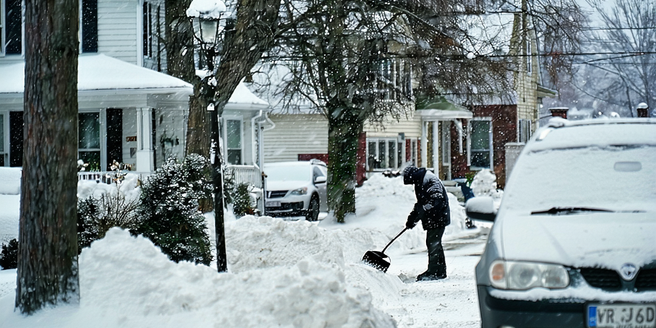
Types of Winter Weather Advisories
Winter weather advisories caution people about various hazards. The main types include winter storm watches, warnings, and advisories. A winter storm watch indicates potential severe conditions like heavy snow or ice within days. A warning signifies imminent severe weather, calling immediate action. It is crucial to stay informed through local news channels and weather apps during these periods. Advisories are less severe but still noteworthy, alerting to conditions that may cause inconvenience, like moderate snow or slippery roads. Each type aims to prepare and protect the public, ensuring safety precautions are taken. The National Weather Service is responsible for issuing these alerts, using criteria based on local climate and historical impacts. Understanding the distinctions helps people respond appropriately to looming weather threats.
How Meteorologists Predict Winter Storms
Meteorologists use technology and science to predict winter storms. Advanced weather models analyze atmospheric conditions, like temperature and moisture, to forecast developments. Satellite imagery offers detailed views of cloud formations, while radar systems track precipitation and wind patterns. Meteorologists frequently update their forecasts as new data becomes available. These updates are crucial, particularly in rapidly changing weather scenarios. Numerical models simulate potential storm paths, contributing to predictions of snowfall and ice accumulation. Meteorologists also study historical data and trends, comparing past events to forecast future outcomes. Collaboration with meteorological services globally enables more accurate predictions. While forecasts are not foolproof, the integration of technology and expertise significantly improves our ability to anticipate winter storms, helping communities prepare and mitigate impacts.
The Impact of Winter Weather on Daily Life
Winter weather significantly affects daily life, influencing transportation, work, and health. Snow and ice on roads lead to hazardous driving conditions, often causing delays and accidents. Public transport and flights can be disrupted, impacting work and travel plans. Harsh conditions strain infrastructure, resulting in power outages and heating challenges. People are often advised to prepare emergency kits for their homes and vehicles to ensure safety during severe weather. Cold temperatures increase health risks, particularly for vulnerable populations like the elderly. Schools may close, affecting education and childcare arrangements. Industries reliant on outdoor work, like construction, face delays. The cumulative effect of these disruptions necessitates good planning and adaptability, highlighting the need for reliable weather forecasts and community support during winter advisory periods.
Safety Tips During Winter Weather Events
Safety during winter weather events is crucial. Preparing in advance can mitigate risks. Families should stock up on essentials like food, water, and medications. It’s also helpful to have flashlights and batteries on hand in case of emergencies. Ensuring homes are winterized, with proper insulation and heating, can prevent cold-related issues. Vehicles must be ready for winter driving conditions, equipped with snow tires and emergency kits. Dress in layers when outdoors to retain body heat, and avoid extended exposure to extreme cold. In case of power outages, have alternative heating methods, but ensure proper ventilation to prevent carbon monoxide poisoning. Stay informed about local weather updates to adjust plans accordingly, prioritizing safety at all times.
Deciphering Weather Advisory Terminology
Weather advisory terminology can be confusing, but understanding it is key to effective response. Terms like ‘watch’, ‘warning’, and ‘advisory’ denote urgency and severity. A ‘watch’ means conditions are favorable for severe weather, urging preparedness. A ‘warning’ indicates severe weather is occurring or imminent, necessitating immediate action. It’s crucial to stay updated with local forecasts and alerts during the winter months. ‘Advisory’ signals less hazardous but still significant conditions. Learning these terms helps individuals assess risks and take appropriate measures. The terms are part of a standardized system by meteorological authorities, ensuring clear communication to the public. Being informed aids in decision-making before and during adverse winter weather, enhancing safety and reducing potential impacts.
